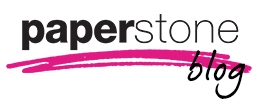10 Top Tips for Setting Up an Archive

Are you thinking of setting up an archive for your organisation?
Here are 10 top tips on running an archive:
- Decide on a mission statement. Define the purpose of your archives, and decide what to include in your collection. Evaluate all potential materials against this statement.
- Have a list of criteria to help you decide what to include. Consider the significance of every item, and whether another archives is already storing it.
- Consider the range of materials you can realistically store. For example, hand-written and word-processed documents, printed publications, photographs, drawings and maps, as well as video and sound recordings and digital files.
- Who will be in charge of the archives? If you don’t have a professional archivist helping out, appoint someone to learn the principles of archiving.
- Choose a suitable location for your archives. It should be a secure area, away from heavy footfall. Basements and attics are not the best location because there is more risk from flooding or vermin. The ideal environment for documents is a humidity of around 50% and a temperature of approximately 68°F. If these ideals are unattainable, seek to establish a stable environment that does not fluctuate.
- When you decide to keep a particular item, accession it straight away. This involves identifying the donor and the type of donation, and recording any conditions relating to the gift and who may have access to it. At the same time assess and record the physical condition of the materials.
- Organise the arrangement of archival content. Usually this means storing papers in one area, sound recordings in another, and so on. It may involve cleaning soiled materials, checking for mould, and putting the items into appropriate archives boxes or other enclosures.
- Create a collection guide. This will include the collection title, and a brief history of the business, family, individual or organization around which the collection was formed. The guide may include a scope and content note and a box and folder inventory. Consider making this information available in a card file or database.
- To learn more about archival practices and terminology, consult more experienced archivists, and attend professional meetings. The Internet is also a useful source of information.
- Finally, always remember the golden rule of archiving: never do anything to a material that you can’t undo later!




Recent Comments